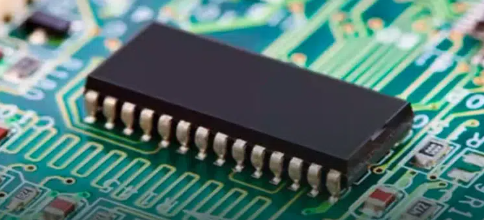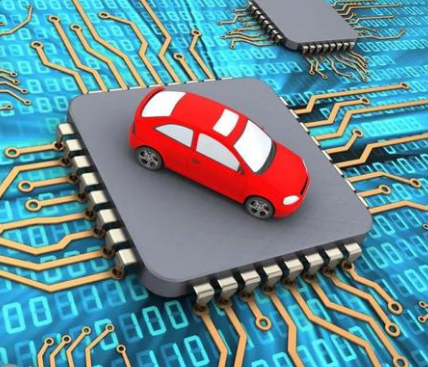What is the relationship between chips, semiconductors and integrated circuits
Chips, semiconductors and integrated circuits are important concepts in the electronics field. As technology continues to develop, their application scope and influence are also expanding. So what is the relationship and difference between chips, semiconductors and integrated circuits? Let us find out together in this article.

What is a chip?A chip, also known as a microcircuit, microchip, or integrated circuit (IC), refers to a silicon chip containing an integrated circuit. It is very small and is often part of a computer or other electronic equipment.
Chip is the collective name for semiconductor component products. It is the carrier of integrated circuit (IC) and is divided into wafers. A silicon wafer is a small piece of silicon that contains an integrated circuit that is part of a computer or other electronic device.
What is semiconductor?Semiconductor refers to a material whose electrical conductivity at room temperature is between that of a conductor and an insulator. Semiconductors are widely used in radios, televisions and temperature measurement. For example, a diode is a device made of semiconductors. A semiconductor is a material whose conductivity can be controlled, ranging from an insulator to a conductor. Whether from the perspective of technology or economic development, the importance of semiconductors is huge.
The core units of most electronic products, such as computers, smartphones or digital recorders, are closely related to semiconductors. Common semiconductor materials include silicon, germanium, gallium arsenide, etc., and silicon is the most influential one in commercial applications among various semiconductor materials.
What is an integrated circuit?An integrated circuit is a miniature electronic device or component. Using a certain process, the transistors, resistors, capacitors, inductors and other components and wiring required in a circuit are interconnected, made on a small or several small semiconductor chips or dielectric substrates, and then packaged in a tube shell , becoming a microstructure with required circuit functions; all components in it have structurally formed a whole, making electronic components a big step towards miniaturization, low power consumption, intelligence and high reliability. It is represented by the letters “IC” in circuits.
The inventors of the integrated circuit are Jack Kilby (integrated circuits based on germanium (Ge)) and Robert Noyce (integrated circuits based on silicon (Si)).
Most applications in the semiconductor industry today are silicon-based integrated circuits. This is a new type of semiconductor device developed in the late 1950s and 1960s. It is a small piece of silicon that integrates semiconductors, resistors, capacitors and other components required to form a circuit with certain functions and the connecting wires between them through semiconductor manufacturing processes such as oxidation, photolithography, diffusion, epitaxy, and aluminum evaporation. on-chip, and then solder the electronic device packaged in a tube. Its packaging shell comes in various forms such as round shell type, flat type or dual in-line type.
Integrated circuit technology includes chip manufacturing technology and design technology, which is mainly reflected in processing equipment, processing technology, packaging and testing, mass production and design innovation capabilities.
What is the relationship between chips, semiconductors and integrated circuits?There is a close relationship between chips, semiconductors and integrated circuits.It can be said that a semiconductor is a material, a chip is a carrier of electronic components manufactured using semiconductors, and an integrated circuit is a technology and product that integrates multiple electronic components onto a chip.
Chip is the collective name for semiconductor component products. It is the carrier of integrated circuit (IC, integrated circuit) and is divided into wafers.
Integrated circuits refer to active devices, passive components and their interconnections that make up a circuit and are fabricated on a semiconductor substrate or an insulating substrate to form a structurally closely connected and internally related electronic circuit. It can be divided into three main branches: semiconductor integrated circuits, film integrated circuits, and hybrid integrated circuits.
Semiconductors are the basic materials needed to make chips and integrated circuits. A chip is a carrier made of semiconductor material on which multiple electronic components are integrated. These components can be transistors, resistors, capacitors, etc. and are used to perform various circuit functions.
Integrated circuits are technologies and products that integrate multiple electronic components onto a single chip. By integrating these components onto a chip, complex circuit functions can be implemented in a smaller, more efficient space. The invention and development of integrated circuits has greatly improved the performance of electronic devices and played an important role in computers, communications, consumer electronics and other fields.
Therefore, semiconductors are the basic materials for chips and integrated circuits. Chips are the carrier of integrated circuits, while integrated circuits are technologies and products that integrate multiple electronic components on a chip to achieve various functions. The relationship between them can be understood as a hierarchical relationship from materials to products.
If you need to purchase chips, please visit AMEYA mall to consult online customer service!
在线留言询价

Packaging Chips For Cars
- 一周热料
- 紧缺物料秒杀
| 型号 | 品牌 | 询价 |
|---|---|---|
| MC33074DR2G | onsemi | |
| BD71847AMWV-E2 | ROHM Semiconductor | |
| RB751G-40T2R | ROHM Semiconductor | |
| CDZVT2R20B | ROHM Semiconductor | |
| TL431ACLPR | Texas Instruments |
| 型号 | 品牌 | 抢购 |
|---|---|---|
| STM32F429IGT6 | STMicroelectronics | |
| IPZ40N04S5L4R8ATMA1 | Infineon Technologies | |
| BU33JA2MNVX-CTL | ROHM Semiconductor | |
| BP3621 | ROHM Semiconductor | |
| TPS63050YFFR | Texas Instruments | |
| ESR03EZPJ151 | ROHM Semiconductor |
AMEYA360公众号二维码
识别二维码,即可关注



























